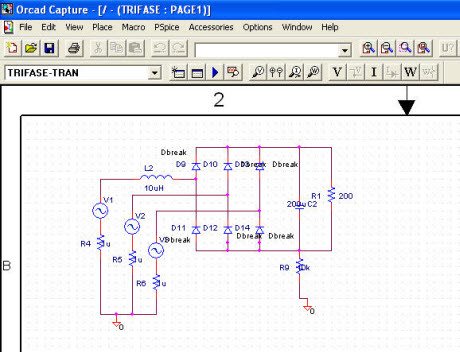

Submit your favorites here! Related subreddits
Ground in pspice schematics mods#
If you find a post violating one of these rules please report it so the mods can review it ASAP.

Posts related to education that are not specifically EE should be taken to /r/EngineeringStudents. Posts about building electrical (residential or industrial) as well as electrical grid systems should be taken to /r/electricians. r/gadgets is a better place for non-engineering problems. No tech support questions on consumer products, unless it is truly an engineering problem. Generic "Please solve this problem" posts will be removed.ĥ.No Consumer Product Tech Support Questions
Ground in pspice schematics free#
If you'd like help with an assignment, feel free to post the question along with your progress so far and specific questions that you have. However, if we see off topic, an influx and/or multiple posts (more than one a day) from a single user, they will be removed at the moderators discretion.

Some exceptions can me made for personal websites and blogs for things such as scholarly research papers and reports.Ī sprinkle of funny posts help keep the sub from becoming stale. No advertising of products, services or personal websites/blogs. Intelligently explain why they are wrong, don't just say they're an "idiot". Under Analysis – Setup, choose Transient, and simulate theĬircuit.Welcome to /r/ElectricalEngineering! A place to ask questions, discuss topics and share projects related to Electrical Engineering. Source, and enter the shape of the source voltage:Ġ V at 99.9 ns to 5 V at 100 ns, then from 5 V at 200 ns to 0 V at 200.1Ġ.1 ns rise time. Input voltage source to a VPWL (piece-wise In the Graph window, choose Trace – Add Trace, and add V( R1:1), the voltage at the load resistor:Īnd we have the voltage transfer function for the Sweep source V2 from 0V to 5V at 0.01V increments: MOSFET models are located in the breakout.slb library, under the names Mbreakn (NMOS) and MbreakpĪnd enter appropriate values for the parameters. You can edit the transistor model if you wantĪnd the frequency response shows the passband We find the specifications for the 2N2222 transistor:Īssumes the 2N2222 has a b of 255.9. Here is the schematic with the bias voltagesĢN2222 transistor, and its collector is connected to Node 2, its base to Node However, it is easier to go back to the Schematic program and select Analysis – Display Results on SchematicĪnd/or Enable Current Display. The theoretical value is about (RLĬurrents, you can look at the ASCII output file. Gain of about 1.5 at a frequency of 1 kHz. Voltage is the voltage at the + terminal of V3, Since we’re interested in the gain of theĬircuit, we want to plot the output voltage divided by the input voltage. Will interpret this as milli (10 -3).) Now choose Analysis – Simulate and PSpice will run, In this case we will also select AC Sweep which will give the frequencyĬlick on AC Sweep to tell what frequency rangeįrequencies from 100 Hz to 1 MHz. Use the component VDC for DC power supplies, and VAC You canĬhange the value of a component by double-clicking on the component value, andĬomponents together by placing wires – DrawĪn analog ground ( AGND). Object by clicking on it to highlight it, then use Edit – Rotate (or Ctrl-R). Need a component of the same type as one you have already placed, you can use Select the part you want and place it on the Things such as voltage sources will be in analog.slb. If the part you want is not on the list, tryĪnother library – parts such as transistors will probably be in eval.slb, while Which will allow you to select pats from libraries. The Draw drop-down menu, and select Get new part (or use the shortcut Start up you will get a screen which looks like this: Start with the PSpice Schematics program. PSpice provides a free student version of its program which User interfaces for Spice, which make it much easier to use. Several companies have developed graphical Intuitive to use because the input is an ASCII file rather than a circuitĭiagram, and the output is another ASCII file rather than a graph. Spice does the circuit analysis and puts out bias conditions, frequency response, and/or transient response. You then tell Spice what information you want There is always a ground node, which is Number 0.

In its original form you tell Spice whatĮlements are in the circuit (resistors, capacitors, etc.), and then enter theĬircuit diagram as an ASCII file showing what nodes each element is connected Program developed by the EE Department at the University of California at Berkeley for computer simulation of analog circuits.


 0 kommentar(er)
0 kommentar(er)
